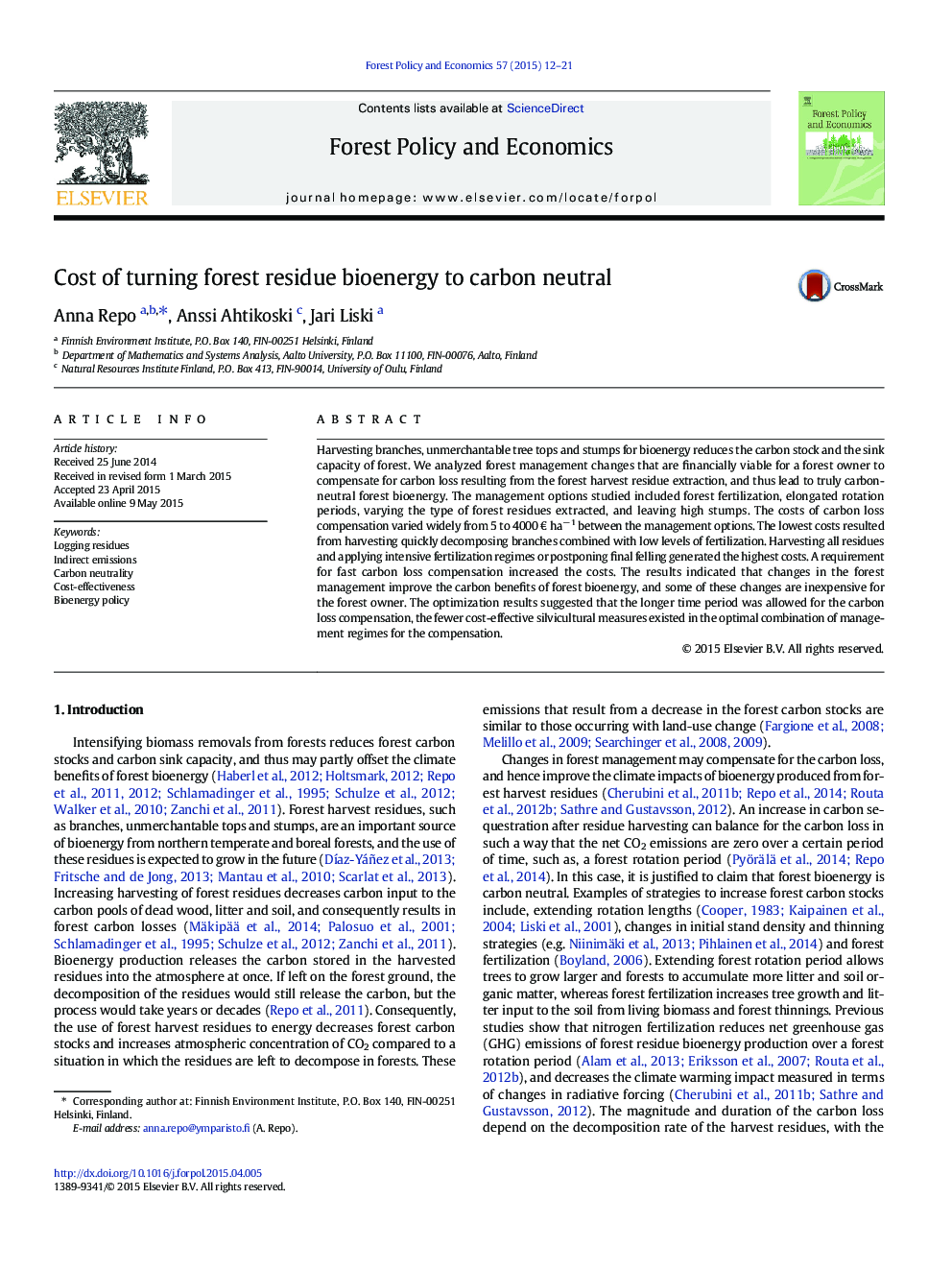| کد مقاله | کد نشریه | سال انتشار | مقاله انگلیسی | نسخه تمام متن |
|---|---|---|---|---|
| 91778 | 159844 | 2015 | 10 صفحه PDF | دانلود رایگان |
• Forest management changes can compensate for the carbon loss resulting from bioenergy production.
• Costs of carbon loss compensation vary greatly depending on the management changes.
• Some of these changes are inexpensive to the forest owner.
• The sooner carbon neutrality is required, the greater are the costs.
Harvesting branches, unmerchantable tree tops and stumps for bioenergy reduces the carbon stock and the sink capacity of forest. We analyzed forest management changes that are financially viable for a forest owner to compensate for carbon loss resulting from the forest harvest residue extraction, and thus lead to truly carbon-neutral forest bioenergy. The management options studied included forest fertilization, elongated rotation periods, varying the type of forest residues extracted, and leaving high stumps. The costs of carbon loss compensation varied widely from 5 to 4000 € ha− 1 between the management options. The lowest costs resulted from harvesting quickly decomposing branches combined with low levels of fertilization. Harvesting all residues and applying intensive fertilization regimes or postponing final felling generated the highest costs. A requirement for fast carbon loss compensation increased the costs. The results indicated that changes in the forest management improve the carbon benefits of forest bioenergy, and some of these changes are inexpensive for the forest owner. The optimization results suggested that the longer time period was allowed for the carbon loss compensation, the fewer cost-effective silvicultural measures existed in the optimal combination of management regimes for the compensation.
Journal: Forest Policy and Economics - Volume 57, August 2015, Pages 12–21
